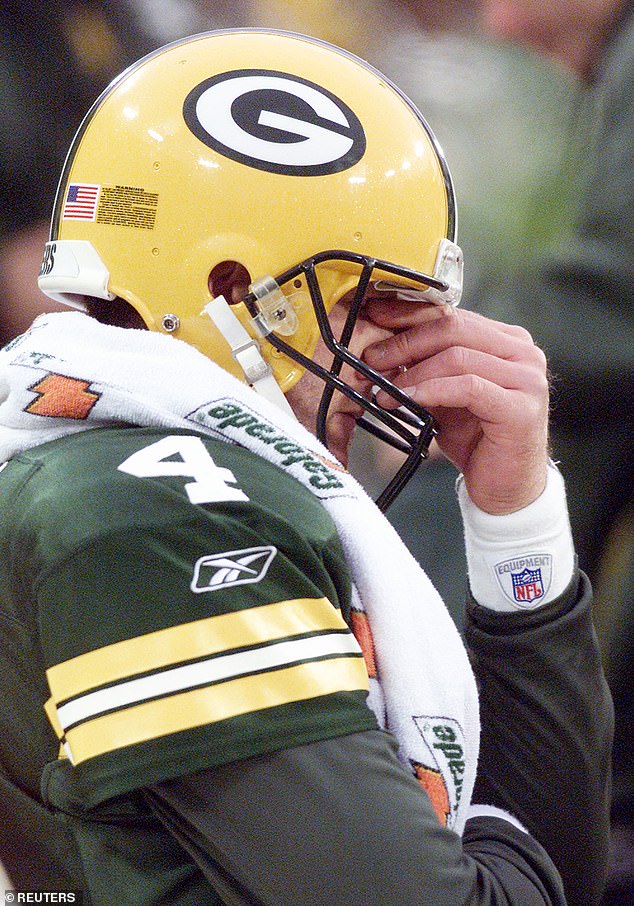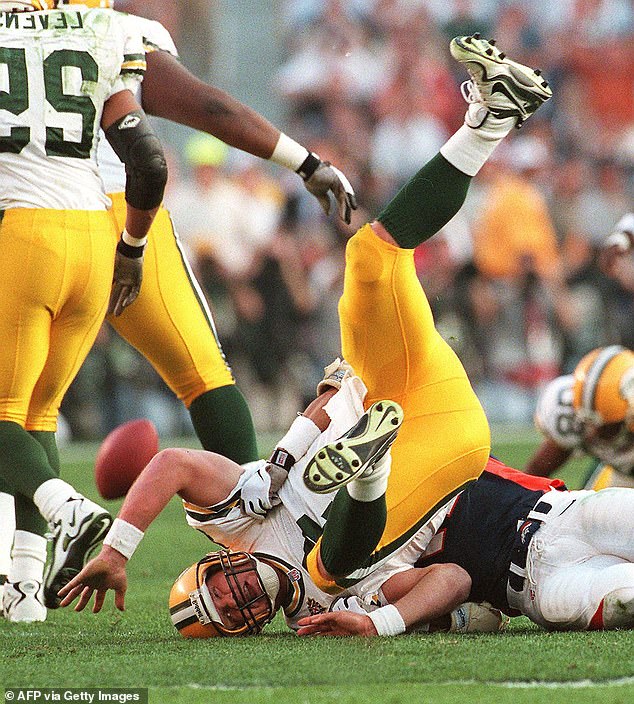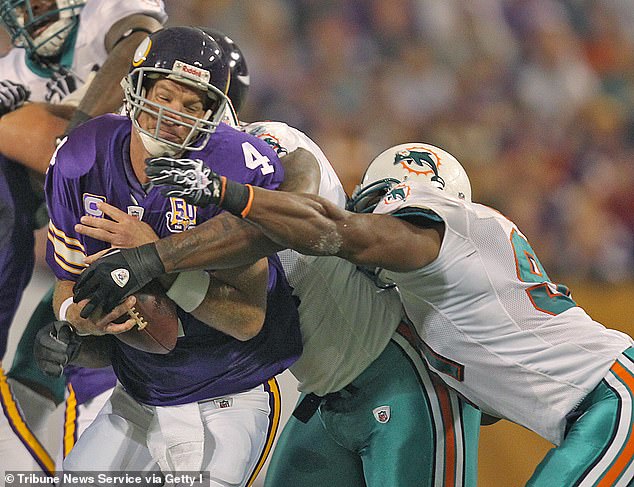How Brett Favre revealed his fears of brain disease years before Parkinson’s diagnosis
Brett Favre recently revealed that he has been diagnosed with Parkinson’s disease. It’s not the first time he’s shared his fears about traumatic brain injury with the public.
“I look at it like I’ve probably had thousands of concussions,” Favre confessed to DailyMail.com in 2018. “If a concussion is ringing in your ears, seeing stars, feeling a little dizzy, feeling fuzzy, hazy, whatever, I can’t even count how many of those I’ve had. A lot.”
Favre spoke exclusively to DailyMail.com at the time, in part to promote Prevacus, a biotech company he had invested in to develop a drug aimed at preventing and treating concussions.
It was that investment, Favre explained during Tuesday’s congressional hearing, that led him to become ensnared in a widespread welfare fraud scheme in Mississippi. The retired NFL legend was never charged in the case and has paid back more than $1 million in no-show speaking fees that were funded by state welfare programs, though he reportedly owes more than $700,000 in interest payments.
“I also, unfortunately, lost an investment in a company that I believed was developing a breakthrough drug for concussions that I thought would help others,” Favre told the House Ways and Means Committee on Tuesday. “And I’m sure you can understand why it’s too late for me, because I’ve recently been diagnosed with Parkinson’s. This is also a cause that is very close to my heart.”
Brett Favre appears before the House Committee on Ways and Means on Capitol Hill

Favre pulls a pained face as he sits on the bench after being fired by LaVar Arrington in 2002
Concussions have been linked to an increased risk of Parkinson’s disease, and Favre’s case follows the famous example of Muhammad Ali, who was diagnosed with the syndrome about 30 years after he began amateur boxing. Only unlike Ali, who quietly deteriorated, Favre was candid about his fears when he spoke to DailyMail.com in 2018.
The hardest part, Favre explained, were the moments when he suddenly lost his memory.
“Those were the worst concussions, and I couldn’t remember them for a while,” he said. “It came back to me later, but it took a while. No pain. Just, ‘What’s going on here?’
The worst happened on his last hit in 2010, when he was taken down by the Chicago Bears defense while playing for the Minnesota Vikings.
After stumbling to his feet, a bewildered Favre asked a member of the training staff, “What are the Bears doing here?”
This would be Favre’s retirement. He failed the NFL’s mandated post-concussion testing and was scratched from the final game of the regular season. A few weeks later, Favre officially turned in his retirement papers.

Packers quarterback Brett Favre gets sacked by Denver Broncos defensive back Steve Atwater

Minnesota Vikings quarterback Brett Farve is sacked by Miami Dolphins defenders in 2010
That post-concussion testing may have saved Favre from further damage, but the truth is that the NFL didn’t require such testing for much of his 20-year career. And like many who played youth, high school and college football in the 1980s, Favre wasn’t worried about head injuries.
“Honestly, I think about the concussions I had, you didn’t go to the trainer and say, ‘Hey, I need ice for my head,'” Favre said. “A lot of guys, you went out drinking beer and eating pizza. You didn’t think about it. You thought, ‘I’m just going to have a headache for a couple days,’ and nothing changed.
“There was no protocol, you didn’t have to take a test. You did your normal routine.”
Favre is now familiar with the work of Dr. Bennet Omalu, the forensic pathologist and neuropathologist who has helped the world understand chronic traumatic encephalopathy (CTE) in football players.
“As Dr. Omalu said, that’s a concussion,” Favre said of the doctor played by Will Smith in the Hollywood film Concussion. “I don’t care if you think it’s serious or not serious. It’s a concussion. It’s like a punch in boxing. You say, ‘Oh, he’s fine. He can take the punches.'”
‘Well, it’s a repetitive boom, boom, boom. Tinnitus, blurred vision, seeing stars, it’s all the result of head trauma.
“A little head trauma is bad. A little head trauma over and over again is really bad. And I’ve had a lot of them.”

Favre used welfare funds to help pay for a volleyball hall at Southern Miss, his alma mater
Favre continues to face negative publicity over his involvement in the $77 million fraud case.
Favre was specifically accused of pumping $5 million in social funds into a new volleyball arena at his old school, Southern Mississippi, where his daughter played volleyball at the time, and another $1.7 million in government aid to develop a treatment for Prevacus’ concussion.
The NFL icon also recently sued former NFL players and media commentators Shannon Sharpe and Pat McAfee over comments made about him and the funds.
McAfee’s lawsuit was dropped after he publicly apologized for telling viewers of his popular ESPN show that Favre was “stealing from the poor people of Mississippi.”
